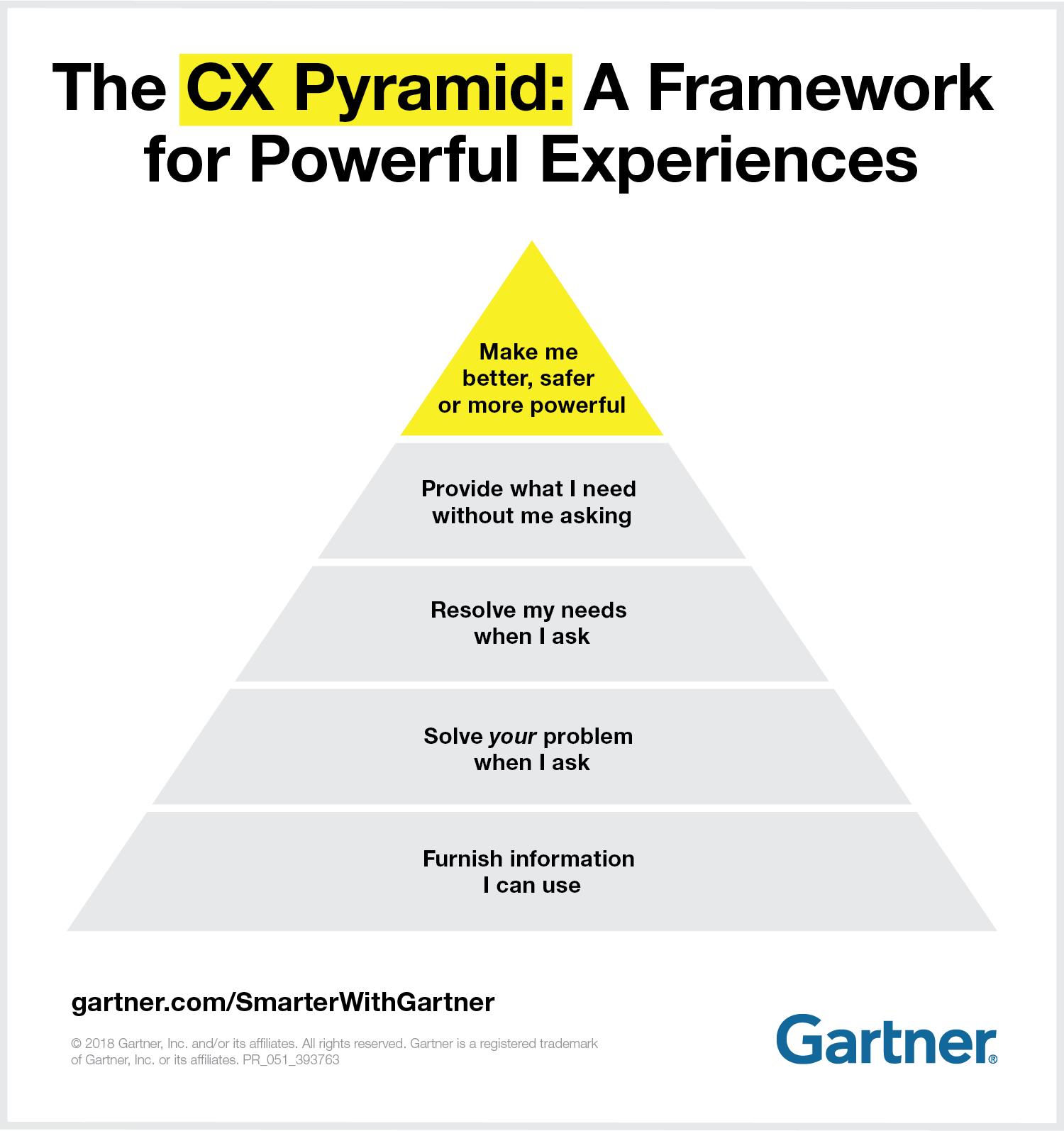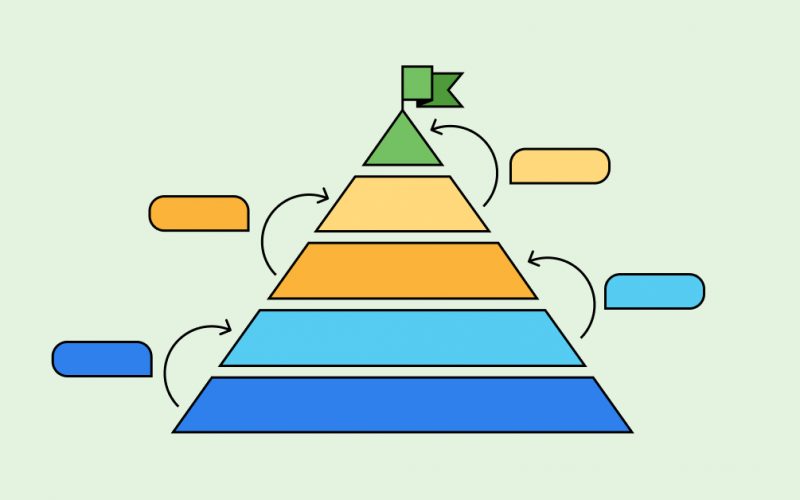Customer Experience (CX) can directly impact customer satisfaction especially when they assess businesses while making purchasing decisions. Primarily, what a customer experiences when interacting with businesses will directly impact customer loyalty.
Yet, many businesses have yet to invest in CX. A study by McKinsey found that the average customer experience performance since 2009 were only worth about five to ten percent less in terms of key measures, such as “likelihood to remain/renew”, “to buy another product”, and “to recommended”. It means that if the CX performance is just “average”, the impact on the three measurements above is only about 5 to 10% less than the industry average.
Increasingly, businesses have started gaining awareness of the importance of CX and are moving towards competing based on customer experience but the uptake has often been slow as Gartner discovers, as shown in the quote below. To make CX advantageous for their growth, businesses need to react now.
“81% of marketing leaders responsible for customer experience say their companies will mostly or completely compete based on CX in two years.”
2017, Gartner: Customer Experience in Marketing Survey
It’s no longer about what features you have that others don’t or how competitive your price is. What matters now is all about what customers experience when dealing with your brand. Better CX will bring better customer satisfaction and therefore increases customer loyalty. It does sound like something many businesses already know – until Covid-19 caught many business owners by surprise when businesses started having to compete for attention online due to the consequence of the pandemic leading to the surge of online sales activities.
Why the CX Framework is Important in Building Excellent CX
For many retailers who are newly online and trying to survive virtually, the new experience they offer customers may not always meet their customers’ needs. This is further affirmed by a study done by Oracle, which found that while 59% of executives claim to deliver consistent customer experiences, ironically, only 8% of customers are satisfied.
Then the question remains: what is the best practice for retailers in building good CX?
It seems that businesses can enhance CX by providing easy-to-reach and responsive communication as well as convenient transactional processes which we have discussed in a previous article. Apart from these methods, there are more solutions and effective steps for businesses to create excellent CX.
But before we talk about other elements of good CX, the Gartner’s CX Pyramid Framework will greatly help businesses map out a CX journey which includes all essential pillars of the business. This CX Pyramid will assist businesses in creating and implementing CX strategies which are most relevant to customers.
Implementing CX Pyramid Framework in Retail Industry

Gartner’s CX Pyramid is a framework to help us understand what separates the most powerful customer experiences from the rest. Augie Ray, Research Director at Gartner, said that many organizations understand the importance of CX to the brand but are unable to deliver outcomes that meet or exceed customer expectations. Hence, Gartner conducted multiple research and experiments to create an applicable CX Pyramid Framework for all businesses, namely the Gartner CX Pyramid Framework, which focuses on five key stages. To compete with other businesses, retailers should try to achieve the principles higher up in the framework.
Below, we explain more about Gartner’s CX Pyramid and its possible implementations in the retail industry:
1st stage: Furnish Customers with Information They Can Use
This stage requires businesses to take a good look at their customers’ basic needs and remove anything which doesn’t pertain to them. Information is made easily available and customers are able to get what they want (mainly online) almost on a self-service basis without cumbersome, or worst still, lengthy steps to follow. At this stage though, there are very little help given to end customers — it’s mainly transactional.
Businesses will never enjoy the benefits of customer loyalty or will never be able to provide customer satisfaction unless they can meet customers’ basic needs, even more so now that customer habits and needs have changed and impacted their shopping habits. Understanding this will help your business figure out what customers want and through the most effective channel. Simply put, this will keep your business relevant and favoured in the eyes of your customers.
2nd stage: Solve Customers’ Problems Quickly and Efficiently
At this stage, balancing both business and customer goals, measures, and strategies is key. Challenges such as a non-intuitive check-out process, complicated payment systems, and inefficient returns services need to be wired out to help customers solve the problems they look to your business to solve. To solve these challenges, businesses need to provide solutions such as providing a Frequently-Asked-Questions (FAQ) page which explains the check-out process, making payments, returning products and more. Businesses can also deliver the FAQ through the auto-reply feature or use a chatbot on their customer support channels, which gives customers access to answers or solutions quickly.
3rd stage: Understand and Resolve Customers’ Unique Needs
The third stage requires businesses to listen more carefully to their customers to better understand their needs in order to solve their problems.
Let’s imagine your customer has an issue with your product and wants a new one as soon as possible without wasting any effort. They can simply send you a WhatsApp message and in real-time, you’re able to check and confirm the issue quickly using text, image or video, and trigger a return or replacement process from the chat.
Alternatively, your business can provide free return shipping so that your customers need to only print a return label and ship it back to your business. This free return service will also benefit your business; it was found that 42% of online shoppers feel that free return shipping contributes most to a positive returns experience.
The critical point at this stage is to provide customers with the best customer support. Once they contact your business to claim their warranty, your agent should be responsive and manage things quickly. You can check our previous article to know how to level up your customer service processes with WhatsApp.
4th stage: Provide Experiences that Resolve Needs Before the Customer Asks
This stage is where businesses needs to go one step ahead and predict the needs of their customers, manifesting this in their communication with customers . Businesses will need to analyze more-in-depth knowledge and data about their customers to provide accuracy in the prediction of their customers’ needs and habits. 79% of customers want businesses to demonstrate that they care about them before customers decide on purchasing their products.
In the case of the above-mentioned return service, your staff not only delivers the new product and pick up the defected one but also allows customers to check if the defect persists. Other creative ideas, such as looking at the historical conversations with that customer and some other data (like tags attached to the conversations) to understand the experience that the customers have gone through and reward the customers with extra discounts for subsequent purchases will show that your business cares and understands what they had to go through.
Ultimately, there are many other use cases that businesses will face. The key is how they can go one step further to understand their customers from past interactions and constantly make the experience better and better for them.
5th Stage: Make Customers Feel Better, Safer, or More Powerful
At this point, your job is to empower your customers and make them leave transactions with your company happy and satisfied. To make the point hit home, go one step further and ask your team this: How can using our products and services transform customers? It is worth knowing that 75 percent of customers worldwide expect brands to contribute to their well-being and quality of life. Quoting Gartner:
“The business does not just provide customers with superpowers, but making them feel like they have superpowers.“
2019, Gartner: Create Powerful Customer Experiences
Even better, when customers leave the sales transaction feeling like they have scaled the top of the world, they will come back for more to search for the exact same sentiment. Understanding this and designing a CX that makes customers feel special, valued and empower will go a long way in building brand loyalty in your customers.
Are you ready to build excellent customer experience?
From our discussion above on Gartner’s CX Pyramid, we can conclude that building an amazing CX lies in understanding customers better, including their need for information, affinity and affirmation. Businesses need to employ many strategies to ensure that they are always thinking about their customers’ needs and habits, and more importantly, work on making customers feel special and powerful during their interactions with brands.
Is your business prepared to begin understanding your customers better?
Your business needs solutions that can automatically help you make sense of what customers want based on their purchase history, feedback and interaction with your business. Qiscus is here to help your business understand what your customers want while providing the right tools for your business, regardless of your budget. If you need solutions to deliver your customers’ expectations through conversations, come and talk to us Qiscus here.



